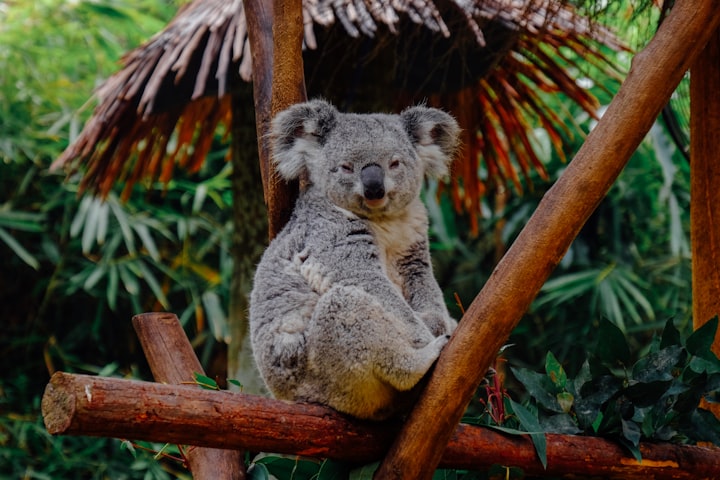Koala
Koalas are one of the most beloved animals in the world, and for good reason. These cuddly creatures, with their fuzzy ears and big noses, are an iconic symbol of Australia, and are often referred to as "koala bears," despite the fact that they are not actually bears. In this article, we will explore the fascinating world of koalas, from their behavior and diet to their conservation status and the threats they face.
Behavior and Habitat
Koalas are native to Australia, where they can be found in the eastern and southeastern regions of the country. They are marsupials, which means that they carry their young in a pouch. Female koalas give birth to a single joey at a time, which stays in the pouch for around six months before it begins to venture out on its own.
Koalas are primarily nocturnal animals, meaning that they are most active at night. During the day, they sleep in the branches of eucalyptus trees, which make up the majority of their diet. In fact, koalas are known to eat only eucalyptus leaves, and can consume up to 500 grams of these leaves each day. They have a specialized digestive system that allows them to break down the tough eucalyptus leaves, which are toxic to most other animals.
Conservation Status and Threats
Unfortunately, koalas are facing a number of threats in the wild, and their conservation status is listed as "vulnerable" by the International Union for Conservation of Nature (IUCN). One of the biggest threats to koalas is habitat loss, as a result of urbanization, land clearing, and climate change. When their natural habitat is destroyed, koalas are forced to move into new areas, which can put them in conflict with humans and increase their risk of being hit by cars or attacked by dogs.
Another major threat to koalas is disease, particularly chlamydia, which can cause blindness, infertility, and death. Chlamydia is a bacterial infection that is common in koala populations, and can spread quickly through a population. There are efforts underway to develop a vaccine to protect koalas from chlamydia, but it is still in the early stages of development.
Conservation Efforts
Despite the challenges facing koalas, there are many conservation efforts underway to protect these beloved animals. One of the most successful of these efforts has been the establishment of koala hospitals and rescue centers, which provide medical care and rehabilitation to sick and injured Conservation efforts for koalas are crucial to ensure the survival of this iconic species. Here are some of the most important conservation efforts that are underway to protect koalas:
Koala hospitals and rescue centers: These facilities provide medical care and rehabilitation to sick and injured koalas. They also work to educate the public about the importance of protecting koalas and their habitat.
Wildlife corridors: These are areas of natural vegetation that connect fragmented habitats, allowing animals like koalas to move between them safely. Wildlife corridors can help to reduce the risk of habitat loss and increase genetic diversity within koala populations.
Habitat restoration: Restoration efforts include planting eucalyptus trees and other vegetation to create new habitats for koalas. These efforts are essential in areas where habitat loss has occurred due to human activities.
Chlamydia management: To manage the spread of chlamydia in koala populations, researchers are developing a vaccine that can protect koalas from the disease. In addition, infected koalas are treated with antibiotics to help control the spread of the disease.
Community involvement: Community involvement is essential for the success of conservation efforts. This includes education and outreach programs to raise awareness about the importance of koala conservation and encouraging local communities to take action to protect koalas and their habitat.
Overall, conservation efforts for koalas require a combination of scientific research, habitat restoration, community involvement, and public education. By working together, we can help protect these iconic animals and ensure their survival for future generations.
Conclusion
Koalas are a beloved symbol of Australia, but they are facing a number of threats in the wild. Habitat loss, disease, and climate change are all putting these animals at risk, but there are many conservation efforts underway to protect them. By supporting these efforts and working to protect their natural habitat, we can help ensure that these adorable animals continue to thrive for generations to come.
About the Creator
Enjoyed the story? Support the Creator.
Subscribe for free to receive all their stories in your feed. You could also pledge your support or give them a one-off tip, letting them know you appreciate their work.







Comments
There are no comments for this story
Be the first to respond and start the conversation.